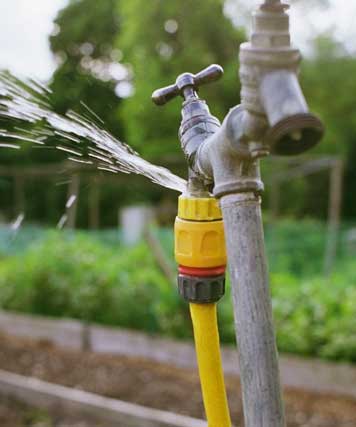How do you feel in relation to Detecting hidden plumbing leaks?

Early discovery of dripping water lines can reduce a potential calamity. Some tiny water leaks might not be noticeable.
1. Take A Look At the Water Meter
Every house has a water meter. Checking it is a guaranteed manner in which helps you find leakages. For beginners, turn off all the water resources. Ensure no one will certainly flush, utilize the tap, shower, run the cleaning equipment or dish washer. From there, most likely to the meter and also watch if it will certainly transform. Because nobody is using it, there need to be no movements. That indicates a fast-moving leakage if it relocates. Likewise, if you discover no changes, wait an hour or 2 and check back once again. This indicates you may have a slow leak that could also be below ground.
2. Inspect Water Intake
Analyze your water costs and also track your water usage. As the one paying it, you need to notice if there are any type of inconsistencies. If you find sudden changes, despite your consumption coinciding, it implies that you have leakages in your plumbing system. Keep in mind, your water bill must fall under the exact same array each month. A sudden spike in your expense indicates a fast-moving leak.
A constant rise every month, also with the exact same practices, shows you have a slow leakage that's additionally slowly intensifying. Call a plumber to completely inspect your property, specifically if you feel a warm area on your flooring with piping beneath.
3. Do a Food Coloring Examination
When it comes to water usage, 30% comes from bathrooms. If the shade somehow infiltrates your bowl during that time without flushing, there's a leakage between the storage tank as well as dish.
4. Asses Exterior Lines
Do not fail to remember to inspect your outside water lines as well. Must water seep out of the connection, you have a loose rubber gasket. One small leakage can waste bunches of water and spike your water expense.
5. Evaluate and Analyze the Situation
Homeowners should make it a practice to inspect under the sink counters as well as also inside cabinets for any bad odor or mold and mildew development. These two red flags show a leakage so prompt interest is required. Doing routine assessments, even bi-annually, can conserve you from a significant trouble.
Inspect for discolorations and weakening as most devices and also pipelines have a life expectations. If you think leaking water lines in your plumbing system, do not wait for it to escalate.
Early discovery of dripping water lines can reduce a potential calamity. Some small water leaks might not be visible. Checking it is a guaranteed way that helps you uncover leaks. One little leakage can squander tons of water and also spike your water expense.
If you believe dripping water lines in your plumbing system, don't wait for it to rise.
5 Signs that Your Home Has a Hidden Leak
Your water bill is unusually high without explanation
Generally, your water bill tends to stay consistent throughout the year as long as the same number of people live in your household year round. The bill might be higher during certain times of the year, such as summer, when your lawn may require more watering than it does in cooler months. However, if you notice a rise in your water bill that you can’t explain, it’s an indicator that there’s a hidden leak somewhere in your home.
You hear running water
One of the biggest signs that you have a water leak is the sound of rushing water when no plumbing fixtures are on and when no water-using appliances are running. If you hear running water in your walls when no water is being used anywhere in your home, locate your home’s main water shut-off valve, shut off your water supply, and contact a plumber at once.
Your home smells musty
Hidden leaks often occur in dark spaces, such as behind walls or under carpeting. Incidentally, darkness and moisture can create an ideal breeding environment for mold or mildew. If you start to smell mildew or the scent of rotting wood or stagnant water around your home, it’s a fair bet that a leak is the culprit.
You find wet spots around your home
The wet spots usually show up as moist areas in your carpeting. If your home has a basement level, puddles on the floor could indicate a slab leak. Outside, unexplainable puddles or lush, green patches in your yard often mean that there’s a leak in your sewer line or main water line.
You have stains, bubbles, or condensation on your walls/ceiling
Stains or condensation on your walls or ceiling are both major signs of a hidden leak. Also, drywall (AKA. sheetrock) is very absorbent, and as it takes on more water from a leak behind a wall, it will start to bubble, swell, or warp. If you see this happening in your home, don’t wait to contact a plumber before the water damage spreads.
https://www.ezflowplumbingaz.com/blog/2019/june/5-signs-that-your-home-has-a-hidden-leak/

Do you enjoy reading up on Detecting hidden plumbing leaks? Put a remark down the page. We will be pleased to know your opinion about this review. We are looking forward to see you back again before long. So long as you enjoyed reading our article if you please be sure to share it. We love reading our article about Finding hidden leaks.